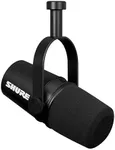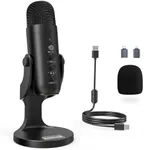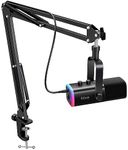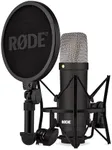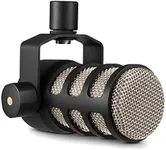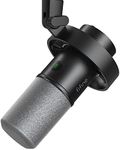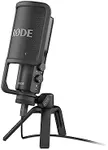Buying Guide for the Best Voice Over Microphone
Choosing a voice-over microphone is all about matching the microphone’s features to your recording environment and the type of voice work you plan to do. Whether you’re narrating audiobooks, recording podcasts, or doing character voices, the right microphone can make your voice sound clear, natural, and professional. Understanding the key specifications will help you make a choice that fits your needs and ensures your recordings sound their best.Microphone Type (Condenser vs. Dynamic)The type of microphone refers to how it captures sound. Condenser microphones are very sensitive and pick up a lot of detail, making them popular for studio voice-over work. They work best in quiet, controlled environments. Dynamic microphones are less sensitive and are better at handling loud sounds and background noise, which makes them suitable for less controlled spaces. If you have a quiet room and want the most natural sound, a condenser is usually best. If you’re recording in a noisier area or want something more forgiving, a dynamic microphone might be a better fit.
Polar PatternThe polar pattern describes how a microphone picks up sound from different directions. The most common for voice-over is the cardioid pattern, which mainly picks up sound from the front and rejects noise from the sides and back. This helps focus on your voice and reduce unwanted background noise. Other patterns like omnidirectional (picks up sound from all directions) or bidirectional (front and back) are less common for voice-over. For most users, a cardioid pattern is ideal, especially if you want to minimize room noise.
Frequency ResponseFrequency response tells you the range of sounds a microphone can capture, from low bass to high treble. For voice-over, you want a microphone that covers the typical vocal range, usually from about 80 Hz to 15 kHz. A flat frequency response means the microphone captures your voice naturally, while some microphones boost certain frequencies to add warmth or clarity. If you want your voice to sound as true as possible, look for a flat or slightly enhanced frequency response in the vocal range.
Connectivity (USB vs. XLR)Connectivity refers to how the microphone connects to your recording device. USB microphones plug directly into your computer and are easy to use, making them great for beginners or those who want a simple setup. XLR microphones require an audio interface or mixer but offer more flexibility and higher sound quality, which is preferred in professional settings. If you’re just starting or want convenience, USB is a good choice. If you plan to upgrade your setup or want the best quality, consider XLR.
Self-NoiseSelf-noise is the amount of noise the microphone itself makes when recording silence. Lower self-noise means cleaner recordings, which is important for voice-over work where quiet passages are common. Self-noise is measured in decibels (dB); a lower number is better. If you’re recording in a quiet space and want professional results, look for microphones with low self-noise (below 15 dB is excellent).
Pop Filter and Shock Mount CompatibilityA pop filter helps reduce popping sounds from plosive letters like 'P' and 'B', while a shock mount minimizes vibrations from desk bumps or movement. Some microphones come with these accessories, while others require you to buy them separately. If you want the cleanest sound and easiest setup, look for microphones that include or are compatible with pop filters and shock mounts.

